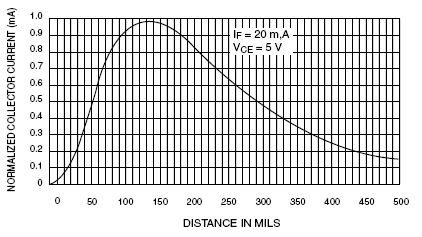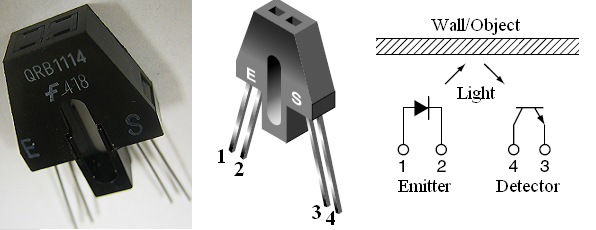Difference between revisions of "Optoreflector"
m (→Application) |
m (→Application) |
||
| Line 11: | Line 11: | ||
The circuit below can be used to detect objects directly in front of the QRB1114. The potentiometer must be used to adjust for ambient lighting conditions. |
The circuit below can be used to detect objects directly in front of the QRB1114. The potentiometer must be used to adjust for ambient lighting conditions. |
||
[[image:qrb1114 circuit diagram.jpg|center]] |
|||
Revision as of 12:36, 10 August 2006
Optoreflector sensors contain a matched infrared transmitter (LED) and infrared receiver (usually a phototransistor) pair. These devices work by measuring the amount of light that is reflected into the receiver. Because the receiver also responds to ambient light, the device works best when well shielded from abient light, and when the distance between the sensor and the reflective surface is small (the graph below shows how distance affects the output value). IR reflectance sensors are often used to detect white and black surfaces. White surfaces generally reflect well, while black surfaces reflect poorly.
Application
In the mechatronics lab, we have the QRB1114 (datasheet) from Fairchild, shown below. It has four pins, with the first pair connected to the LED and the second pair connected to the phototransistor.
The circuit below can be used to detect objects directly in front of the QRB1114. The potentiometer must be used to adjust for ambient lighting conditions.

